SUMMARY
This is AI generated summarization, which may have errors. For context, always refer to the full article.
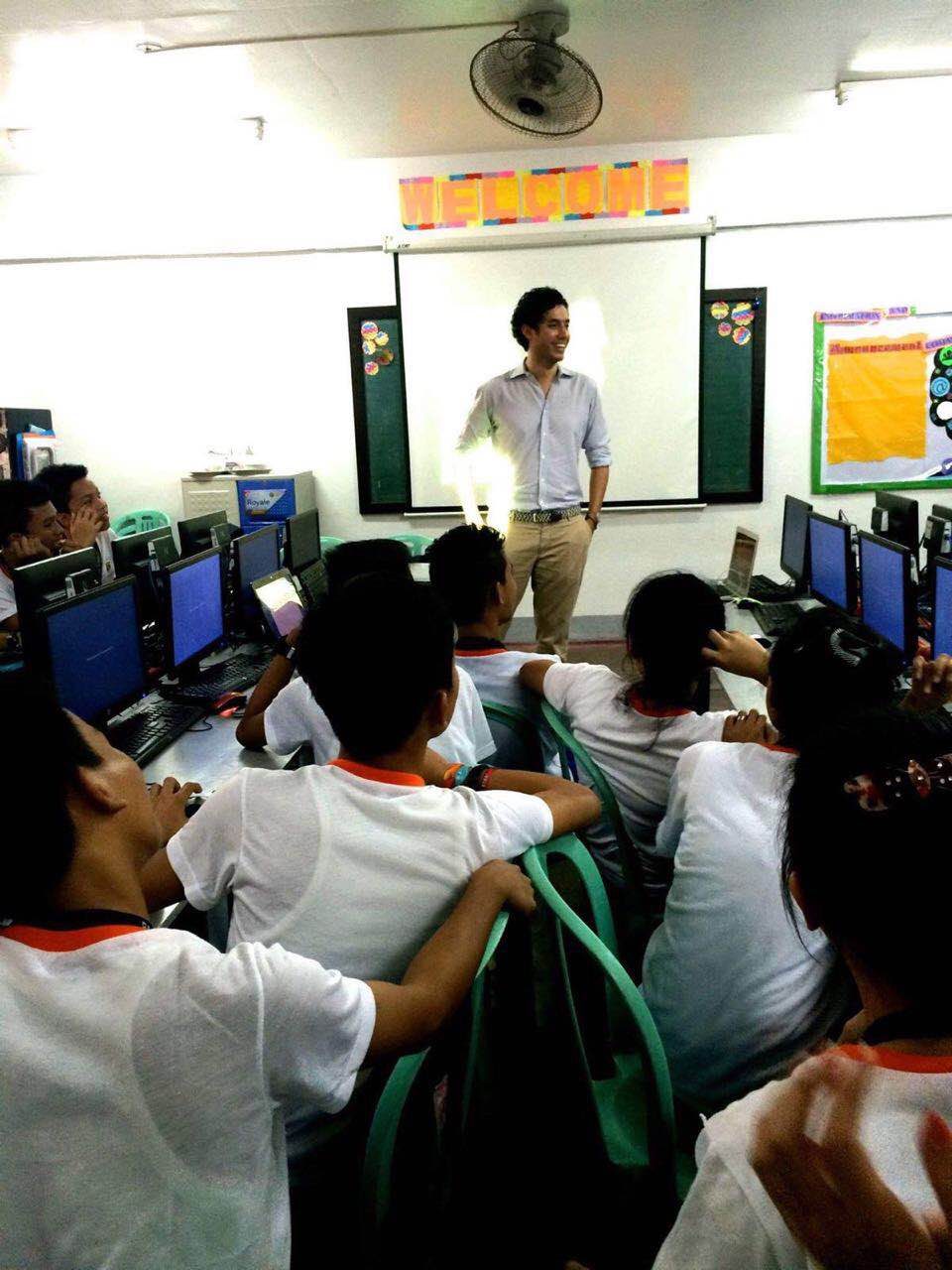
MANILA, Philippines – This school year is a pivotal one for the country: it ushers in the full implementation of the K to 12 program, which adds two years of senior high school to the previous 10-year basic education cycle.
The program lets students choose from 4 tracks: academic, technical-vocational (tech-voc), sports, and arts and design.
Proponents say the tracks will prepare graduates for either college, employment, or entrepreneurship, but critics fear it could lead to higher dropout rates, among other problems.
For social entrepreneur Henry Motte-Muñoz, the key is to help students determine the best senior high school track for them, and the university courses they can eventually take should they wish to get a college degree.
In the last quarter of 2015, Motte-Muñoz launched Edukasyon.ph, an online platform that aims to solve the labor mismatch by giving students a comprehensive look at where the choices they make now will lead them.
The Filipino-French Motte-Muñoz, who was recently included in the Forbes 30 under 30 Asia list, found the issue so pressing that he left behind a lucrative career in finance in Britain to come to the Philippines to help solve it.
“Out of the one million and a half kids who will finish high school, only 300,000 at most will go on to higher education, graduate, and find a job,” he said.
“That means we leave behind more than one million Filipinos because they can’t afford college, or because they go in and drop out or end up taking the wrong subjects.”
Youth unemployment
While the Philippines may be one of the fastest-growing economies in the world, youth unemployment remains a major concern.
As recently as May, Labor Secretary Rosalinda Baldoz said that only 10 out of 1,000 Filipino applicants are getting hired because many lack the skills needed for available jobs.
“The worst statistic to my mind is that half of the students who do graduate from college cannot find a job because the skills they picked up are not relevant to the marketplace,” Motte-Muñoz said.
For him, setting up schools to cater to a specific job shortage at a certain point in time would not work in the long run.
“A few years ago, there was a shortage of about 200,000 nurses and so a lot of students applied to be nurses, causing all these nursing schools to be built up,” Motte-Muñoz said.
“Eventually, there ended up being way too many nursing graduates and not enough nursing jobs to accommodate all of them. So you ended up with all these unemployed trained nurses, many of which ended up working in call centers.”
Making informed choices
Through partnerships with the Department of Education (DepEd) and the Commission on Higher Education (CHED), Edukasyon.ph provides comprehensive information on senior high school tracks and strands, plus college courses offered in the country.
Students can also search for programs based on location and the type of school – private or public. Eventually, Edukasyon.ph plans to sort the programs according to quality, based on feedback from students themselves.
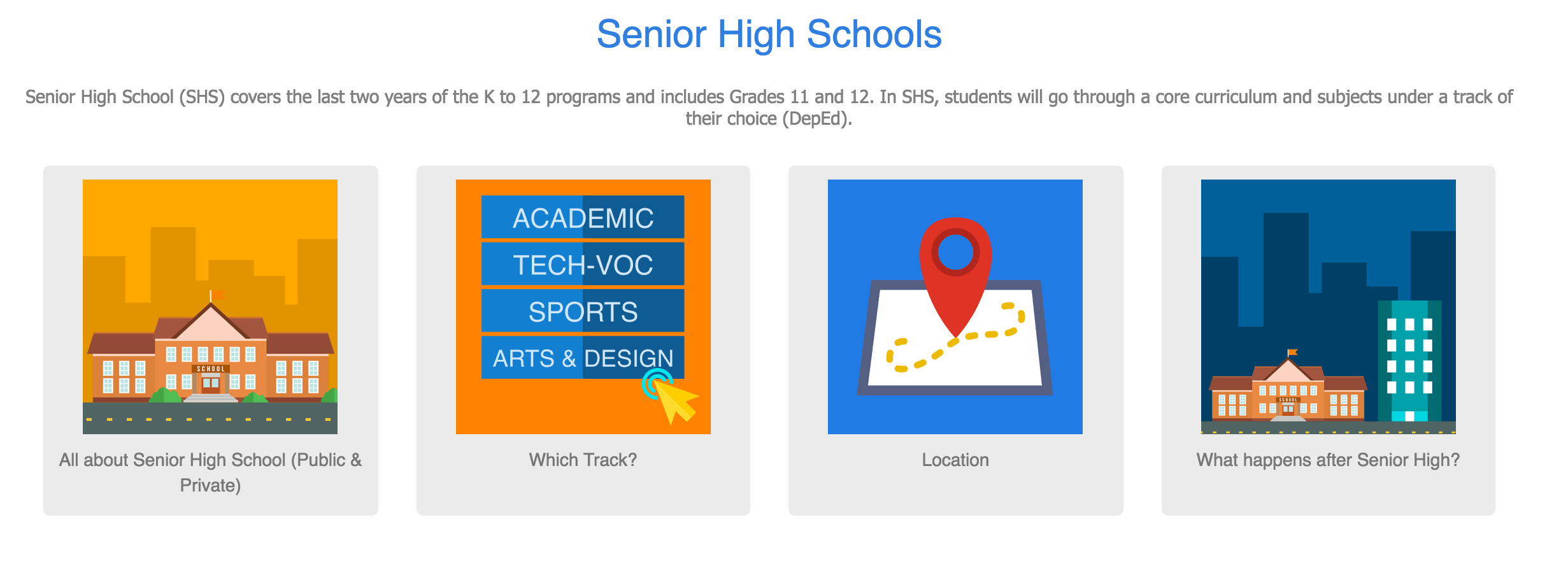
Motte-Muñoz also emphasizes the importance of tech-voc training. According to him, tech-voc has a 70-75% employability rate compared with only 50% for academic courses.
“We are firm believers in it, so we feature all of TESDA’s tech-voc courses on our website. The message we always give to students is, if the education can get you into employment it’s worth considering,” he said.
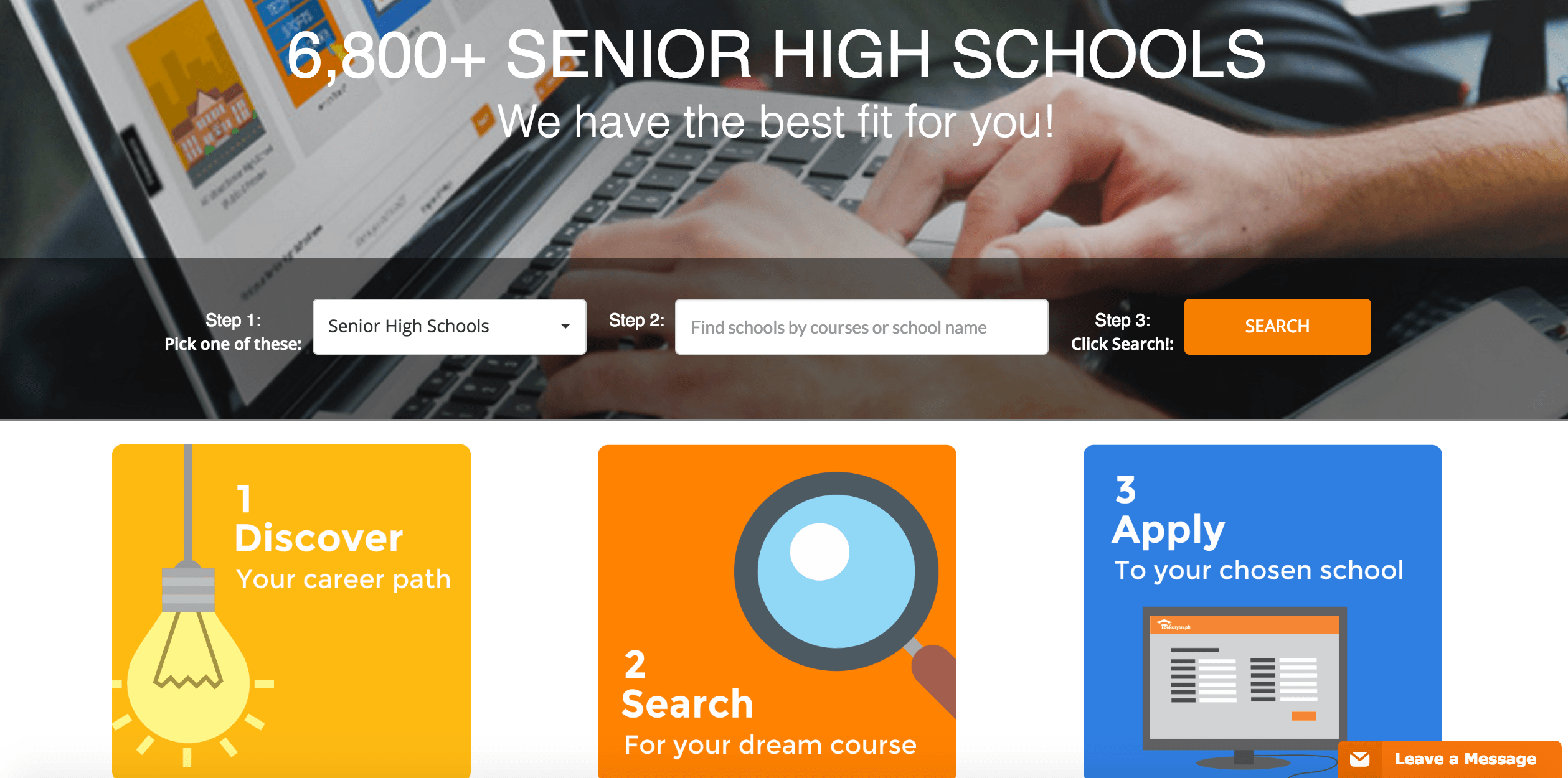
Edukasyon.ph also gives advice to students through curated articles, videos, and infographics that let them know what each job entails, including how much they can expect to earn.
“Initially we were really focused on giving students choices for schools, but we realized that if you give students choice without advice, you lose the kid. When you show them 40,000 courses you easily overwhelm them,” Motte-Muñoz explained.
Counselors are also available for more guidance.
“Interactivity is crucial to this,” he said, “and so we try to get students to play around. The average user spends more than 7 minutes on our site.”
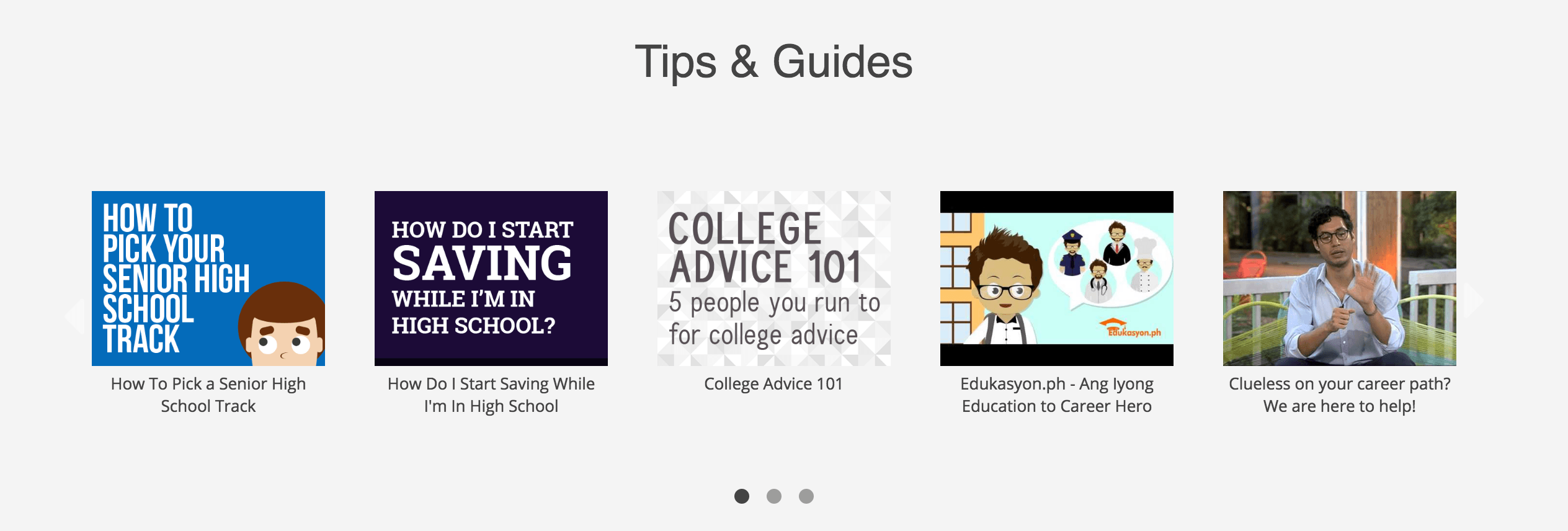
Universal reach
While the platform can be accessed by students from all family income levels, those in the lower strata may be less Internet-savvy.
To reach out to them, Edukasyon.ph has partnered with foundations to give talks to public school students. Motte-Muñoz estimated that they have managed to visit around 20,000 public high school students so far.
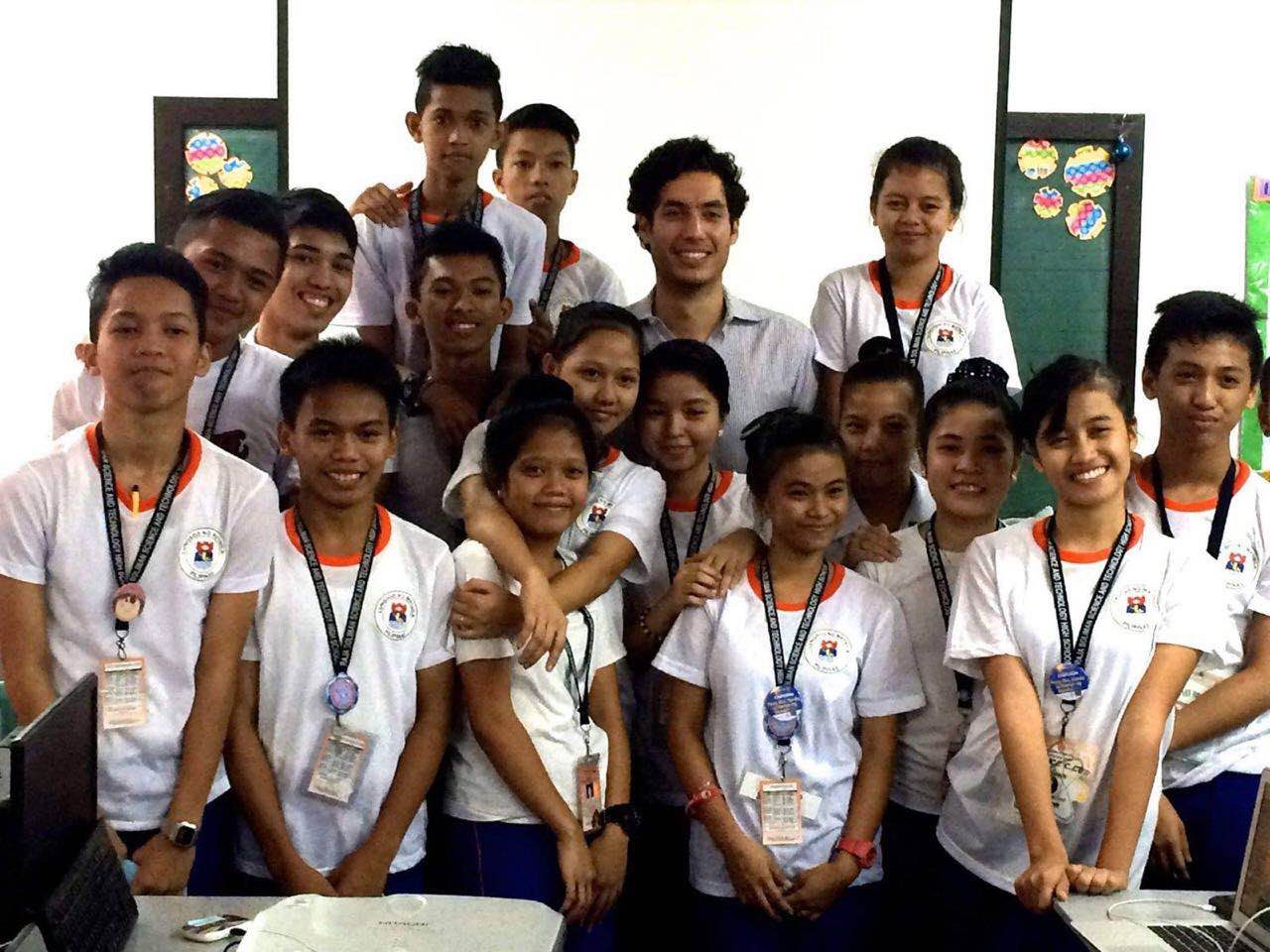
Edukasyon.ph will also make use of Facebook’s Free Basics program beginning July.
“A lot of students engage us directly through Facebook through free data, and with Free Basics we’ll be able to list a lot more of our content that can be accessed by any student regardless of income level,” Motte-Muñoz said.
Those interested in scholarships can take a look at the step-by-step process on Edukasyon.ph.
K to 12 birthing pains
Plugging the information gap is also necessary. For instance, not all schools are ready for the K to 12 program.
“It’s going to be quite chaotic so we’re trying to bring a bit of order into it. There will be a lot of kids who think they will be going to a senior high-ready school next year but they’re not,” said Motte-Muñoz.
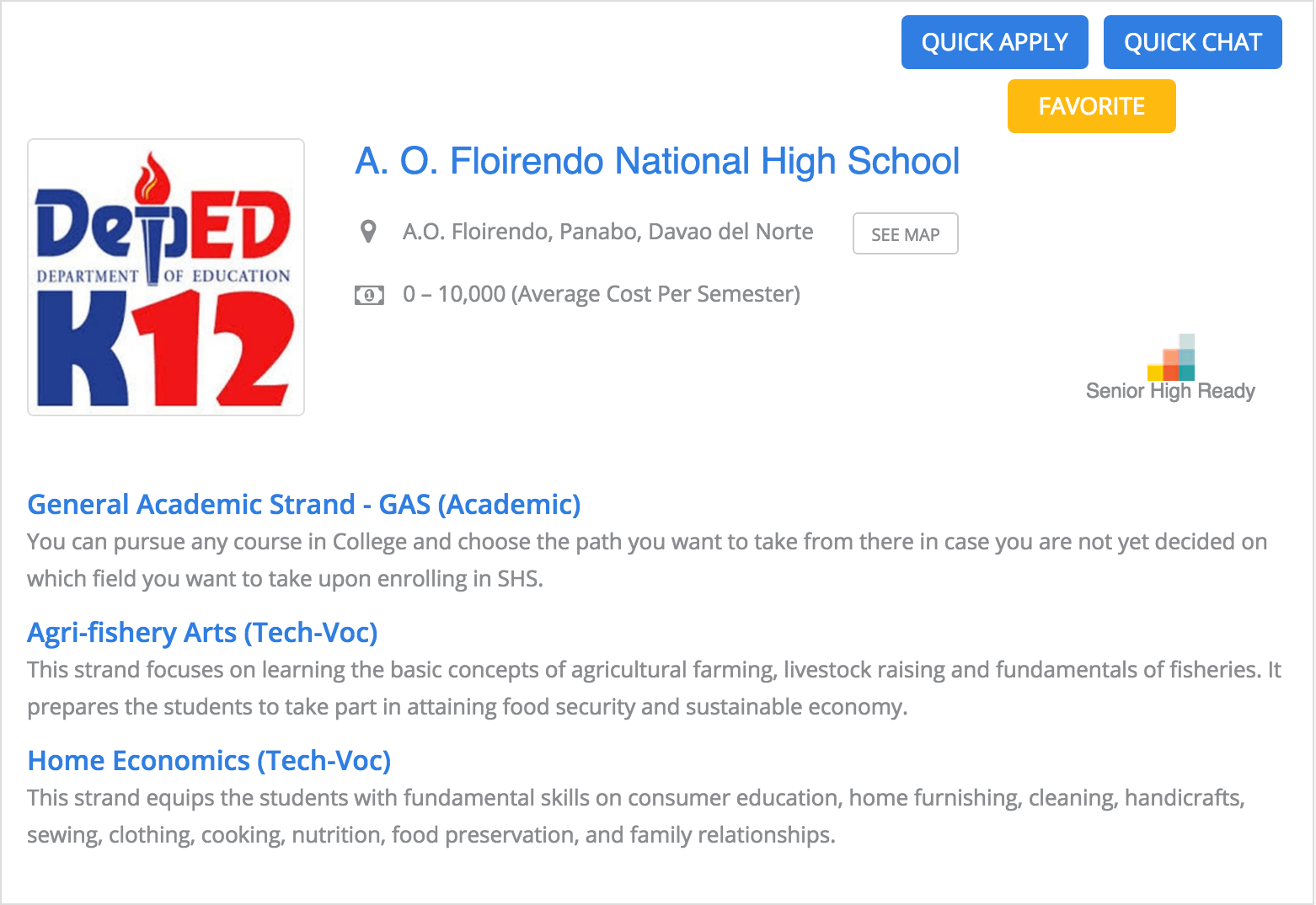
He also estimated that about 20% of students may find themselves without a spot in the first week of school, which he predicted would be a period of reassigning them to new senior high schools with availability.
“Given that it’s the first year of implementation, a lot of private institutions are also deferring enrollment and so the market should clear by August,” Motte-Muñoz said.
He added that the program ultimately offers options to students so they can still be productive even if they cannot afford to go to college.
“One of the reasons K to 12 is great is that before, if you were 16 and you were too poor to go to college, you also weren’t allowed to work, so you were basically penalized twice,” he said.
Despite criticism against K to 12, Motte-Muñoz believes it will later on be proven that the program is a necessary one.
At its heart, the reform will give students a lot more choices as they shape their lives. The hope is that they will be better informed when they make them. – Rappler.com
Add a comment
How does this make you feel?
There are no comments yet. Add your comment to start the conversation.